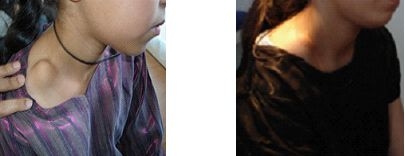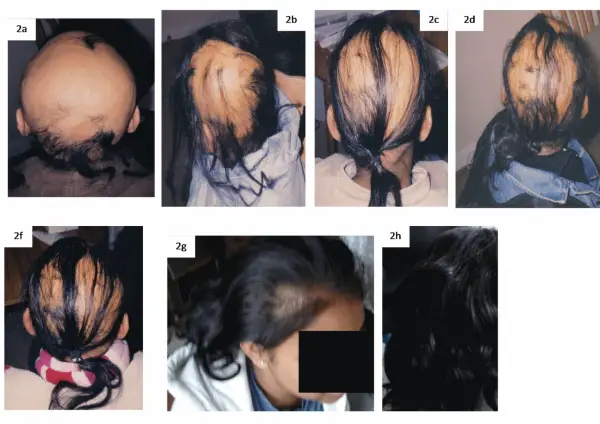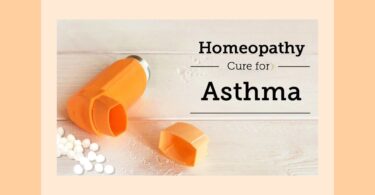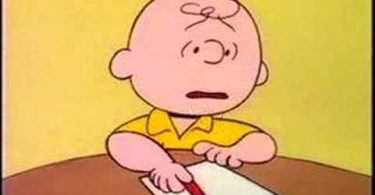This article aims to outline the process of restoration from abnormal to normal using homeopathic remedies. Before going further with this, it is vital to understand the difference between normal and abnormal. Normal by definition means ‘functioning in a natural way – confirming to the standard, usual or typical; lacking observable abnormalities or deficiencies; free from illness of any sort.’ Abnormal on the other hand refers to anything this ‘deviates from normality’.
The abnormal functions in a patient can be recognised by listening to their complaints about the condition and/or history taking. Both of these give a subjective account of the symptoms whereas clinical observations made by the clinician provide an objective outline of the symptoms. In addition to this, physical examination and clinical examination and the correct interpretation of the patient`s language is extremely important.
There are four major types of abnormalities which we come across in our clinical practice.
- Congenital
- Acquired
- Genetic (Hereditary)
- Immunological.
This article shall focus on the process of restoration. Irrespective of the type of abnormality, its restoration would be incomplete without focusing on the following ‘essentials of Homeopathy’, which we do consider in case taking within our limitations.
- Constitution (The physical and mental temperament that is expressive of the natural traits and predisposition of the individual),
- Diathesis (A mental or physical [inherited or acquired] chronic predisposition or disease state), Thermal Reaction
- Miasm (A diathesis based on an infection, its sequellae, or inherited effects)
- Totality (The aggregate of the characteristic symptoms in a case. The totality of a single symptom refers to a complete symptom)
- PQRS (Peculiar Queer Rare Strange symptoms)
- Sensation (the experience of a symptom, what it feels like. One of the parts of a complete symptom)
- Classical Approach
- Seven Layers of Suppressions
- Single Dose or Poly pharmacy
- Doctrine of Signature
In addition to these fundamentals of case taking, it is essential to value the importance of abnormal pathology, which perhaps might be the ‘real obstacle’ to treating a particular condition, as outlined in the cases that follow –
CASE – 1, A CASE OF EXOSTOSIS
Exostosis refers to the formation of new bone on the surface of a bone, and can lead to chronic pain ranging from mild, to severe and debilitating, depending on the size and location of the same.
A patient ‘B’ was brought into my clinic with the chief complaint of severe and chronic pain in the right arm. The patient can be described as a lean and thin but healthy young lady. She hardly fell ill during her childhood. The patient appeared to be shy, yet very cooperative and enthusiastic girl. She had a fair complexion and long hair.
An otherwise active and enthusiastic young girl was unable to lift, move or rotate her arm, which showed mid clavicular swelling. The patient complained that the pain radiated from the right side of the neck, chest and arm and later traversed throughout the right arm up to the finger tips. The swelling had started appearing and the intensity of the pain gradually became more severe and unbearable. It could possibly be that the Exostosis in the mid clavicular region could be exerting pressure on the Scalenus group of muscles which must be causing the pain.
The possibility of the patient having a cervical rib was also considered. In the same light, the presence of Scalenus Anticus Syndrome or Thoracic Outlet Syndrome was also considered.
The pain made the patient get angry and moody with a high degree of irritability. The clavicular swelling was first noticed after 3 months of birth, and had continued to grow in shape and size since then (so in this case it is a congenital abnormality). The patient experienced no pain while pressing the swelling, but was unable to lift, hold or handle anything heavy with her right arm. If done, she would feel the pain in the right pectoral region. The patient also complained of getting tired and exhausted very easily and experiencing pain in the right, loin after running during Physical Education lessons at school.
The Miasm of the patient can be described as ‘Psora turned to Sycotic’ and her Diathesis can be outlined as Tubercular and Sycotic. The possibility of a birth trauma cannot be overlooked. In a similar vein, there could have been a history of foetal distress which could possibility be presenting itself on the arm of the patient (leading to? green stick # resulted in mal-union). The patient however pointed out that she feels better when the swelling is covered, i.e. warmth over that area makes her feel better. The patient’s appetite, thirst, stool, urine and sleep were reported to be normal. She did not report experiencing any dreams; neither did she feel a craving or an aversion to anything in specific.
The patient’s X-ray report of right clavicle stated that, “There was un-united fracture of the mid 3rd of the Right Clavicle associated with inverted “ V “ shaped angulation of the fragment accounting for the lump. The fractured ends were well defined and corticated and it was assumed that this fracture may be long standing. It was assumed also that there has been a history of trauma to account for fracture but please correlate clinically.”
Post the consideration of the abnormal pathology and its correlation with the clinical picture of the drug with Repertorization, and references from Materia Medica, it was decided to use Calcarea Flour 3x as the remedy for this condition. The improvement in the condition post treatment can be noticed in Image 1a-1b.
Drug Picture of CalcareaFlour-3x (Reference from Synthesis Repertory & Boericke Materia Medica)
Calcarea Flour is a powerful tissue remedy for hard, stony glands, varicose and enlarged veins and malnutrition of bones.
Extremities
- Ganglia or encysted tumors at the back of the wrist. Gouty enlargements of the joints of the fingers.
- Exostosis on fingers
- Chronic synovitis of knee-joint
Skin
- Marked whiteness of skin.
- Scar tissue; adhesions after operations.
- Chaps and cracks.
- Fissures or cracks in the palms of the hands, or hard skin.
- Suppurations with callous, hard edges. Whitlow.
- Indolent, fistulous ulcers, secreting thick, yellow pus. Hard, elevated edges of ulcer, surrounding skin purple and swollen.
- Knots, kernels, hardened glands in the female breast.
- Swellings or indurated enlargements having their seat in the fasciae and capsular ligaments of joints, or in the tendons.
- Indurations of stony hardness.
Note to remember: A “chronic” remedy needs some time before manifesting its effects, therefore it should not be repeated too frequently.
CASE – 2. A CASE OF ALOPECIA TOTALIS
Alopecia Totalis is a condition in which all the head hair is lost.
Patient -J came to my clinic as a young lady who had lost almost all the hair on her head. The patient caught it after having a haircut at a beauty salon; she developed intense itching on the scalp which consequently led to progressive hair fall since 9 months prior to her visit to my clinic. She developed alopecia patches and within few months she had lost most of her hair. The patient also complained of pain at the root of hair follicles.
Patient reported trying various treatments for alopecia before coming to my clinic. Patient J can be described as a very sharp, active, restless, constantly changing places, smart and inquisitive young lady. She suffered from severe constipation and pain in the abdomen with nausea. She would be irritable, angry and wanted to be left alone. She would want to cover her scalp with a scarf. Fear of black dogs-while walking in the street, must change the direction. Spasmodic cough in childhood, esp. at night, diagnosed for Asthma.
Rubrics and Symptomatology:
Pt. got infected with Ringworm from beauty salon after haircut. Medically described as a –
“Tinea Capitis “Ringworm or Tinea infection affecting the scalp.
Miasm: Psora manifested in Ring worm-(Acquired Pathology)
Constitution: Restless, Active, Irritable, Angry and desires to be left alone. Shy.
Repertorization suggested: Bacillinum (of Burnett).
Dosage given: Bacillinum 1M, Two doses Repeated every week for several weeks.
The indications of Bacillinum are polymorphous because of its broad spectrum of action which extends to Skin, Scalp-Alopecia, Pytiriasis Versicolor, Impetigo. Bacillinum has the property to kill and arrest the Tinea at the root of the hair follicles, allowing its normal growth. Also, it has been proven valuable in treating fungal infection of the skin, scalp and inguinal region. The pictures below illustrate its great effectiveness on Tinea Capitis.
The images 2a-2h show a progressive growth of her hair after my treatment.
To conclude this article, I would like to quote Hahnemann, “He must investigate what is to be cured in disease and know what is to be curative in various medicines….. Finally, he who knows the obstacles to recovery in each case and is aware how to remove them so that the restoration may be permanent, only then does he understand how to treat judiciously and rationally, and he is a true practitioner of the healing art of Homeopathy. “







good ,encouraging result .keep it up.
Good to see the results with Homeopathy, and still some ignorant do not believe in Homeopathy. It is just like standing outside the pool and learning the swimming. Similarly many must try and experiment with Homeopathy, which will bring faith and confidence towards this True Healing Art.
I t is important to consult qualified and experienced Homoeopath as half trained and so called Homoeopath may disappoint you.
Homoeopaths like Dr Nikunj Trivedi are professionally trained with 5 years full-time Homoeopathic education and are equipped with proper knowledge to help the suffering community, even in so many incurable called cases.
All those, who do not believe in homoeopathy, must experience the results themselves.
The best homeopaths consider all the factors, as you have done in these cases. Your talent and is very clear. Thank you!
Hello Doctor,
Your article shows the miracles of homeopathy and it encourages me to believe that my 5-year-old son will be cured with homeopathy.
My son is having grand mal seizures for the last six months. Every month the night before the new moon night (according to the calendar) the seizure attack comes, lasts for 2 minutes, followed by hot perspiration and deep sleep. Clinching of teeth, sharp shout before the attack, hand and leg joints tight, no frothing from mouth, eyes open and gazing the sky without any movement. This is a nocturnal seizure as the time of the seizure is at night during sleep. He is thin boy with debilitated gait. He eats everything, like sweets a lot. He is good in studies. He remembers everything of his studies and prior incidences in his life very well. He is left handed.
As medically seizure is known as a non-curable disease. But I want to see the magic of homeopathy. Considering the totality of the patient please suggest me a medicine and cure my child.
I need you help.
Sanjay Debnath
congratulation
good work